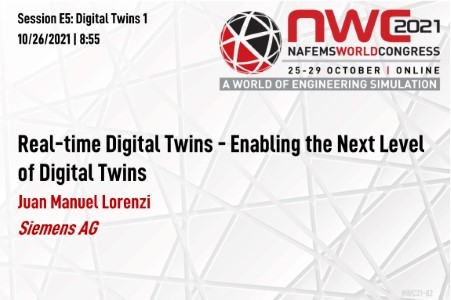
Abstract
Digital Twins are a major trend in digitization with a high potential to unlock model-based value-streams beyond R&D. For example, advanced monitoring and diagnostics solutions leveraging real-time models allow for gaining insights beyond available sensor information and, thus, ultimately enable more efficient operations and higher availability. However, often digital twins live in silos with a limited usability beyond their tools, domains, or creators.
The concept of Executable Digital Twins (xDT) aims at overcoming this limitation. Executable digital twins are specific encapsulated realizations of Digital Twins together with their execution engines. They enable the reuse of simulation models from R&D and unlock new digital value streams and business models towards selling availability instead of the product itself. To overcome the manual efforts in today’s toolchains, we present a novel workflow framework leveraging simulation standards like FMU/FMI, containerization technologies like Docker, advanced calibration techniques like multi-fidelity gaussian processes, or model order reduction technologies like operator inference. These allow for addressing the different requirements with respect to their accuracy including uncertainty quantification, execution time, continuous calibration, or usage out of the original context. A particular focus will be on real-time execution capability since this opens up new application opportunities for digital twins.
Alongside introducing the next generation concept of digital twins and corresponding technologies enabling this, we will highlight the potential of real-time digital twins alongside several real-life Siemens use cases. For example, for rotary machinery and especially electric motors xDT-based virtual sensors allow for the monitoring of temperatures and vibrations with so far unmatched accuracy in real time. Moreover, the reliable online detection of faults and the prediction of their evolution becomes possible which is key for any x-as-service business. This was not possible so far with purely data-based approaches, but due to the combination of physics-based models from simulation and AI-based approaches, a reliable prediction of system states is feasible.



